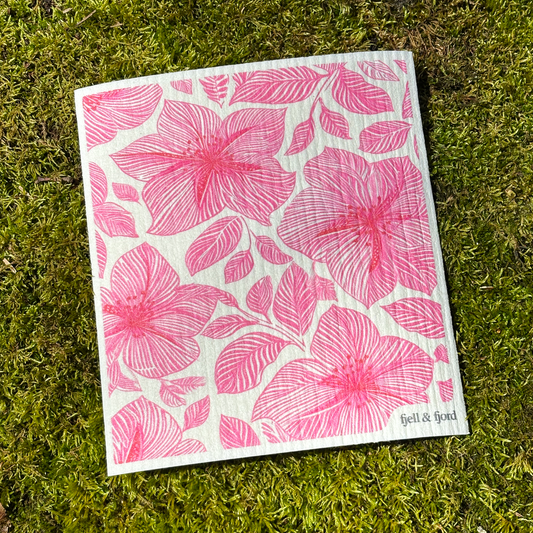Swedish dishcloths are becoming a favorite for those wanting to live more sustainably. These eco-friendly alternatives to paper towels and sponges offer significant environmental benefits, making them a smart choice for any green home.
Why Swedish Dishcloths?
Swedish dishcloths are made from 70% wood cellulose and 30% cotton, both natural and renewable resources. Unlike paper towels, which contribute to deforestation and create a lot of waste, Swedish dishcloths are reusable and can replace up to 17 rolls of paper towels. This not only saves trees but also reduces the amount of waste we produce.
Biodegradable and Compostable
One of the best things about Swedish dishcloths is that they are biodegradable. When they reach the end of their life, you can compost them, and they will break down naturally without harming the environment. This is a big improvement over synthetic sponges, which can take hundreds of years to decompose and often leave behind microplastics.
Lowering Carbon Footprint
Swedish dishcloths are also a greener choice when it comes to carbon emissions. The production process for these cloths is less energy-intensive than that of paper towels. Plus, because they last longer, you don't have to replace them as often, which means fewer emissions from manufacturing and transport.
A 2012 MIT study found that using two paper towels produces about 15 grams of CO2. If a family of four uses two rolls of paper towels a week, that adds up to around 219 pounds of CO2 emissions a year, or the same as burning 11 gallons of gasoline. By switching to Swedish dishcloths, you can significantly cut down on these emissions.
Reducing Chemical Pollution
Traditional cleaning products often require harsh chemicals, but Swedish dishcloths can be easily sanitized using simple, non-toxic methods like boiling, microwaving, or running them through the dishwasher. This means fewer chemicals end up in our waterways and soil.
Supporting a Circular Economy
Using Swedish dishcloths helps promote a circular economy, where products are designed to be durable, reusable, and recyclable. This is a big shift from the "use and dispose" model of many traditional cleaning products. By making this switch, you're supporting a system that values resource efficiency and environmental care.
Raising Awareness
The popularity of Swedish dishcloths shows that more people are becoming aware of and committed to sustainable living. Companies making these dishcloths often follow eco-friendly practices from sourcing to packaging, further reducing their environmental impact and educating consumers along the way.
Conclusion
Switching to Swedish dishcloths is a small change that can make a big difference. By reducing waste, lowering your carbon footprint, and minimizing chemical pollution, you can help protect our planet while keeping your home clean and stylish. As more people make this switch, the collective impact on the environment could be enormous.












